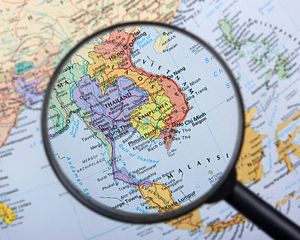In step with the marked deterioration in its relationship with China since 2012, and rising Chinese labor costs, Japan has increasingly shifted its investment toward Southeast Asia. While Thailand has been a popular Japanese investment destination for quite some time, other countries in the region have also seen large increases, with Japanese companies attracted by their lower labor costs and more stable relations. As Japan’s investments increase, they are also becoming more varied. Instead of focusing on increasing production within their supply chains, Japanese companies are also investing more and more in the consumer markets of these countries. The long-term ability of Japanese companies to strengthen not only their supply chain but also their market share in emerging countries with rapidly expanding populations is important. With Japan’s population aging and declining, these markets represent a large part of the future of corporate Japan.
The shift in investment from China to Southeast Asia for Japan has been steadily increasing. The Japan External Trade Organization (JETRO) reported in April that Japanese businesses invested 2.33 trillion yen (roughly $22.8 billion) in Vietnam, the Philippines, Singapore, Thailand, Malaysia and Indonesia in 2013, and invested 887 billion yen in China. Compared to 2012, those figures represented a doubling of investment in Southeast Asia, but a decrease of 18 percent for China. JETRO expects investment in China to further diminish “as the ratio of companies planning expansion there fell to a record low of below 55 percent,” according to the Japanese businesses surveyed.
However, while Japanese interest in Southeast Asia is growing as a whole, not all those countries are experiencing equal investment. Thailand actually saw a contraction in investment from $7 billion in 2011 to $2.5 billion in 2013, likely due to rising labor costs. Vietnam on the other hand has seen a dramatic increase, with Japanese investment jumping from $169 million in 2010 to $4.45 billion in 2013. The number of new investments in Vietnam expanded 35 to 125 over the same time period, and another JETRO survey also found that Vietnamese employees at Japanese companies made on average $3,000 in 2013, which, while higher than Myanmar, Laos and Cambodia, was 12.5 percent of what Singapore employees made and 50 percent of wages in Thailand.
Indonesia has also become a focal point for investment, moving from being Japan’s fifth largest investment destination in 2011 to its second in 2013, behind only China. The Japanese auto industry is utilizing Indonesia’s large population to not only facilitate production, but also sales. In 2013, 1.23 million vehicles were sold in Indonesia, an increase of 10.2 percent over 2012, and 95 percent of them were produced by Japan-based automakers.
Alongside investment in production, Japanese companies are preparing for Southeast Asian countries to become larger consumers in their own right. While these markets are still relatively small, the region’s growing populations and economies stand to create significant centers of demand. One of Japan’s largest retailers, Aeon Co., opened its first major outlet in Cambodia’s capital of Phnom Penh on Monday, an investment of about 20 billion yen. It opened another mall in Vietnam’s Ho Chi Minh City in January, and plans to open another two in Vietnam later this year. Overall the company has plans to open more than 10 shopping complexes in Indonesia, Vietnam and Cambodia over the next three years. Japan’s automakers are also expanding their sales outlets in the region. Mazda Motor Corp. in August this year is planning its first dealership in Myanmar’s biggest city, Yangon. It also opened outlets in Cambodia in 2013 and Laos in 2012. Laos is also a target for Toyota, which is increasing its sales presence in the landlocked country.
As the Organization for Economic Cooperation and Development (OECD) predicts real GDP growth rates for Indonesia, Cambodia, Laos, Myanmar and Vietnam averaging 5.4 percent or higher between 2014 and 2018, more Japanese companies are positioning themselves to take advantage of this emerging market. The region is a unique opportunity for Japanese companies because so many have large parts of their production chain in places like Thailand already, so that turning the region into part of its consumer base could be facilitated quickly. With Japan’s population having peaked, and set to age and decline rapidly over the coming decades bar radical policy changes, new markets are essential in sustaining Japanese corporate growth. Identifying the right countries and market sectors for expansion will thus be a constant challenge for Japan.

































